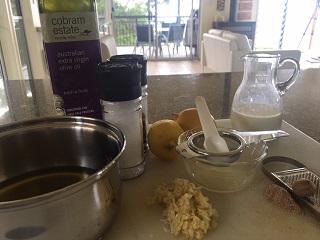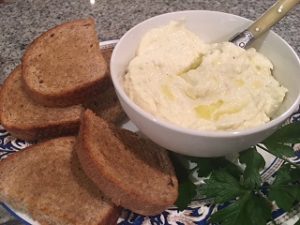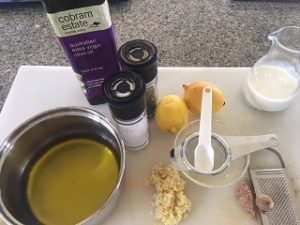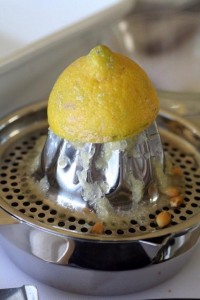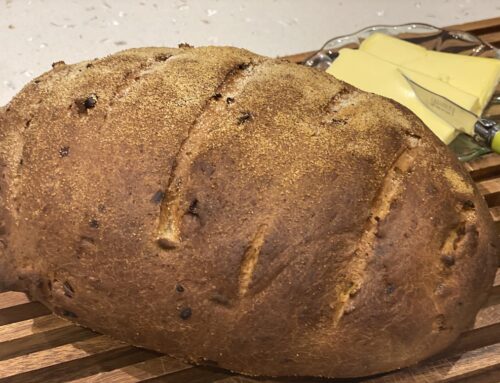There are a few variations on this classic salt cod dish from the south of France. Basically, it is a purée of salt cod, olive oil, milk, garlic and sometimes potato and cream. Some cooks omit the garlic, I like it included. The Basques like it with peppers, tomatoes and garlic, the Bretons prefer it with beans, onions and potatoes, in the Languedoc cooks serve it with chickpeas as a Lenten dish and in the Auvergne it is cooked with walnut oil, garlic, parsley and cream. In Noosa, for an Australian touch, Matt Golinsky has made it with the local spanner crab and served it with a tomato salad garnish.
It is usually served with croûtes and often garnished with chopped black olives; in France, when in season, a garnish of black truffles makes it very special!
- Salt Cod with Potato
- Mise-en-Place
- 2 teaspoons of lemon juice
The brandade may be served piping hot, cold or au gratin. Rick Stein has cooked it as fritters! The Spanish call their salt cod dish Brandada de Bacalao; bacalao is the Spanish word for cod, and ‘morue’ being the French.
The history of salt cod
Salted Cod has an interesting history. Cod was and still is fished primarily in the North Atlantic, and before the days of refrigeration, when a cod fishing trip lasted months, the fish was laid down in the hold with layers of salt to preserve it. By the time the shipped docked the cod was dry as a bone, preserved for more travel to its final destination.
Salting and desalting cod
Years ago, in France, salt cod was the only fish available to people living away from the sea or a river. It was the culinary cousin of “dry goods,” sent across the countryside. Once in the kitchen and ready to use, the first step was to rid it of the salt that preserved it. It was soaked in several changes of fresh water, which mostly de-salted and also plumped it. It is nice to remember that when you are desalting cod, it is the same practiced by cooks for centuries.
Salt cod is the essential ingredient for Brandade de Morue, which originally hailed from around the city of Nîmes, which is near the port of Aigues Morte. This is significant, because Aiges Morte was France’s primary salt port in the 18th century, and from where the salt was exported. This attracted the cod fishermen, who offloaded their dry catch and traded it for salt. The fishermen used the salt to preserve the fish while out on their long fishing trips. The salt cod made its way from Aigues Morte to Nîmes, where the cooks added their finest local ingredients to the salt cod and, brandade was the result!
The reason for considering salting the cod, then soaking and refreshing it is, that the salt firms the cod up, giving it a delightful texture that is good in the brandade; plus it seasons it too. Note that your own salt cod will absorb less milk than commercially salted cod.
While it is fine to use packaged salt cod, it is simple to salt your own firm, white fish fillet. Sprinkle a thin, even layer of sea salt or Kosher salt in the base of a non-reactive dish. Lay the fillets on top, add a few bay leaves for extra flavour, and sprinkle them with another thin layer of salt. The salt doesn’t need to completely cover the fish. Cover and refrigerate for 3 to 24 hours. The cod will give up lots of liquid. Pour it off, and to refresh the cod, soak it in fresh water for 1 hour, if you salted it for 3 hours, or up to 3 hours if you’ve salted it longer. Note that your own salt cod will absorb less milk when cooking, than commercially salted cod.
Brandade De Morue de Nîmes
In cooking classes I use a couple of recipes; one based on Anne Willan’s recipe, from La Varenne Cooking School in Paris and Burgundy, without the potato, although other recipes of hers do add potatoes; and the other is Jacques Pepin, with potato and gratinéed. Both include a few of my additions along the way. See the recipe collection on the website for them both.

